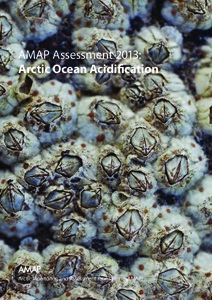AMAP Assessment 2013: Arctic Ocean Acidification.

View/
Average rating
votes
Date
2013Corporate Author
Arctic Monitoring and Assessment Programme (AMAP)
Status
PublishedPages
111pp.
Metadata
Show full item recordAbstract
This assessment report presents the results of the 2013 AMAP
Assessment of Arctic Ocean Acidification (AOA). This is the
first such assessment dealing with AOA from an Arctic-wide
perspective, and complements several assessments that AMAP
has delivered over the past ten years concerning the effects of
climate change on Arctic ecosystems and people.
The Arctic Monitoring and Assessment Programme (AMAP) is
a group working under the Arctic Council. The Arctic Council
Ministers have requested AMAP to:
•• produce integrated assessment reports on the status and
trends of the conditions of the Arctic ecosystems;
•• identify possible causes for the changing conditions;
•• detect emerging problems, their possible causes, and the
potential risk to Arctic ecosystems including indigenous
peoples and other Arctic residents; and to
•• recommend actions required to reduce risks to
Arctic ecosystems.
This report provides the accessible scientific basis and validation
for the statemen.....
Resource URL
www.amap.noPublisher
Arctic Monitoring and Assessment Programme (AMAP)Oslo, Norway
Document Language
enSustainable Development Goals (SDG)
14.3Essential Ocean Variables (EOV)
Inorganic carbonBest Practice Type
Manual (incl. handbook, guide, cookbook etc)Spatial Coverage
Arctic RegionArctic Ocean
ISBN
978-82-7971-082-0Citation
AMAP (2013) AMAP Assessment 2013: Arctic Ocean Acidification. Oslo, Norway, Arctic Monitoring and Assessment Programme (AMAP), 111pp. DOI: http://dx.doi.org/10.25607/OBP-712Collections
- CAPARDUS Practices [244]
The following license files are associated with this item:
 Repository of community practices in Ocean Research, Applications and Data/Information Management
Repository of community practices in Ocean Research, Applications and Data/Information Management
